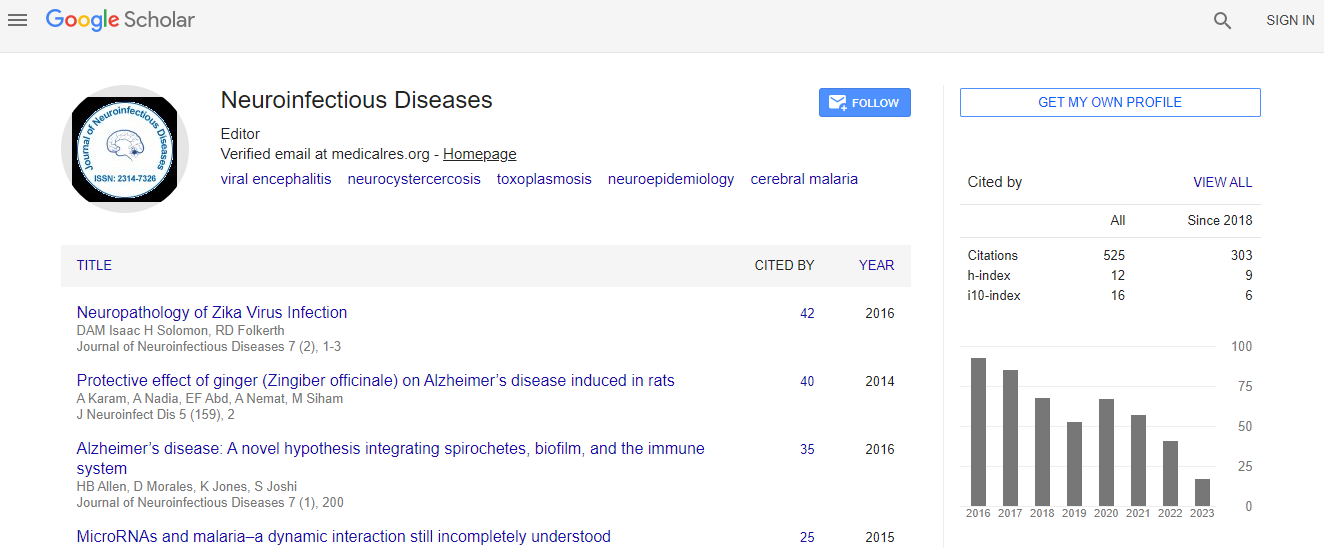Our Group organises 3000+ Global Events every year across USA, Europe & Asia with support from 1000 more scientific Societies and Publishes 700+ ║┌┴¤═° Journals which contains over 50000 eminent personalities, reputed scientists as editorial board members.
║┌┴¤═° Journals gaining more Readers and Citations
700 Journals and 15,000,000 Readers Each Journal is getting 25,000+ Readers
Citations : 739
Indexed In
- Index Copernicus
- Google Scholar
- Open J Gate
- RefSeek
- Hamdard University
- EBSCO A-Z
- OCLC- WorldCat
- Cab direct
- Publons
- Geneva Foundation for Medical Education and Research
- ICMJE
Useful Links
Recommended Journals
Related Subjects
Share This Page
Reflexive and volitional saccadic eye movements and their changes in age and progressive supranuclear palsy
12th World Congress on Mental Health and Neuro Infection & 13th World Congress on Clinical Microbiology and Infectious Diseases
Akila Sekar
Imperial College London, United Kingdom
Posters & Accepted Abstracts: J Neuroinfect Dis
Abstract
The generation of saccades, including vertical and horizontal, and those with reflexive or volitional components, engages different brain networks and oculomotor processes. While differences in the control of vertical and horizontal saccades are well documented, differences in the generation of reflexive and volitional saccades are less well understood. Saccadic eye movements are not only useful in understanding the healthiy brain, but also the pathology of neurological conditions. In Progressive supranuclear palsy (PSP) degeneration occurs in centres for control of vertical eye movements resulting in slower and smaller vertical saccades. The field would benefit from more detailed mapping of how saccadic parameters differ in PSP to aid our understanding of PSP pathology and to improve its diagnosis, which remains an unmet clinical challenge in early stages of disease progression. In this study the differences in the amplitude and velocity of different horizontal and vertical saccades were characterized in healthy controls and in PSP to assess if there were differences in the oculomotor commands that produce them and in search of a novel biomarker for the disease. It was found that reflexive saccades are faster and more accurate than volitional saccades in healthy individuals, irrespective of age, perhaps reflecting the evolutionary advantage of a quick and accurate visual threat response system. There is also evidence that upward saccades are inaccurate but have enhanced velocity which possibly reflects the presence of a previously suggested anti-gravity oculomotor pathway. Findings on the effect of ageing add to previous evidence that saccadic velocities and accuracies decrease with age. A key finding in PSP was that velocity and accuracy of saccades does not decrease over one-minute timescales, something which does not occur Parkinson├ó┬?┬?s disease, suggesting a novel differentiating biomarker.Biography
Akila Sekar was Experienced Undergraduate Research Assistant with a demonstrated history of working in the research industry. She also was Skilled in Public Speaking, Management, Leadership, Data Analysis, and Research. Strong research professional with a BSc Biological Science with Management focused in Biology/Biological Sciences, General from Imperial College London).

